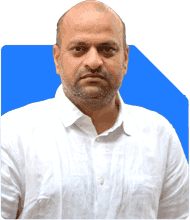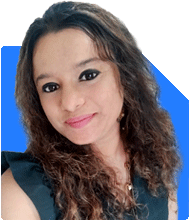Ex-serviceman seeking additional health insurance: Can I have both ECHS and a private Mediclaim policy?
Ramalingam Kalirajan |10872 Answers |Ask -Follow
Mutual Funds, Financial Planning Expert - Answered on Aug 23, 2024
He has an MBA in finance from the University of Madras and is a certified financial planner.
He is the director and chief financial planner at Holistic Investment, a Chennai-based firm that offers financial planning and wealth management advice.... more

My father is an ex service man and he and his dependent s are covered under echs if he wants, can go for private mediclaim policies along with echs card?
Benefits of Having Both ECHS and Private Mediclaim Policies
Extended Coverage
While ECHS provides good coverage, it may not cover all hospitals or specific treatments, particularly in non-empaneled hospitals or for certain advanced procedures. A private mediclaim policy can bridge this gap, ensuring broader coverage.
Additional Sum Insured
With healthcare costs rising, the sum insured under ECHS might not be sufficient for all situations. A private mediclaim policy can provide additional financial security, covering expenses beyond the ECHS limits.
Faster Reimbursement
ECHS reimbursement processes can sometimes take longer. A private mediclaim policy could provide quicker claims processing, reducing the financial burden on your family during emergencies.
Coverage of Non-Dependents
ECHS primarily covers dependents, which may exclude certain family members. A private mediclaim policy can ensure that those not covered under ECHS are still insured.
Cashless Treatment at Private Hospitals
If your father prefers treatment at a non-ECHS empaneled hospital, a private mediclaim policy offering cashless treatment at a wider network of hospitals can be beneficial.
Points to Consider Before Opting for Private Mediclaim
Premium Costs
Private mediclaim policies come with a premium. Ensure that the additional coverage is worth the cost, considering your father's healthcare needs and financial situation.
Policy Exclusions
Review the exclusions in the private mediclaim policy. Some policies might have waiting periods for pre-existing conditions or specific illnesses, which ECHS might cover.
Coordination of Benefits
When having both ECHS and a private mediclaim, it’s essential to understand how claims will be coordinated. Usually, ECHS would be the primary insurer, and the private mediclaim would cover any remaining costs.
Age and Health Condition
Depending on your father's age and current health status, the availability and cost of private mediclaim policies may vary. Some insurers may impose higher premiums or limit coverage for older individuals.
Final Insights
Your father can certainly opt for a private mediclaim policy alongside the ECHS card. This dual coverage offers an extra layer of security, especially for treatments outside the ECHS network or for large medical expenses. However, it’s important to carefully assess the benefits against the cost and ensure that the policy aligns with your family's healthcare needs.
Best Regards,
K. Ramalingam, MBA, CFP,
Chief Financial Planner,
www.holisticinvestment.in
You may like to see similar questions and answers below
Sanjib Jha | Answer |Ask -Follow
Insurance Expert - Answered on Jun 10, 2022
Ramalingam Kalirajan |10872 Answers |Ask -Follow
Mutual Funds, Financial Planning Expert - Answered on Jun 11, 2024
Ramalingam Kalirajan |10872 Answers |Ask -Follow
Mutual Funds, Financial Planning Expert - Answered on Jun 11, 2024
Jinal Mehta | Answer |Ask -Follow
Financial Planner - Answered on Jun 17, 2024
Ramalingam Kalirajan |10872 Answers |Ask -Follow
Mutual Funds, Financial Planning Expert - Answered on Jun 02, 2025
Radheshyam Zanwar |6735 Answers |Ask -Follow
MHT-CET, IIT-JEE, NEET-UG Expert - Answered on Dec 06, 2025
Dr Nagarajan J S K |2576 Answers |Ask -Follow
NEET, Medical, Pharmacy Careers - Answered on Dec 06, 2025
Mihir Tanna |1090 Answers |Ask -Follow
Tax Expert - Answered on Dec 06, 2025
Ramalingam Kalirajan |10872 Answers |Ask -Follow
Mutual Funds, Financial Planning Expert - Answered on Dec 06, 2025
Radheshyam Zanwar |6735 Answers |Ask -Follow
MHT-CET, IIT-JEE, NEET-UG Expert - Answered on Dec 06, 2025
Radheshyam Zanwar |6735 Answers |Ask -Follow
MHT-CET, IIT-JEE, NEET-UG Expert - Answered on Dec 06, 2025
Radheshyam Zanwar |6735 Answers |Ask -Follow
MHT-CET, IIT-JEE, NEET-UG Expert - Answered on Dec 06, 2025
Dr Dipankar Dutta |1837 Answers |Ask -Follow
Tech Careers and Skill Development Expert - Answered on Dec 05, 2025
Dr Shyam Jamalabad |108 Answers |Ask -Follow
Dentist - Answered on Dec 05, 2025
Dr Shyam Jamalabad |108 Answers |Ask -Follow
Dentist - Answered on Dec 05, 2025


























